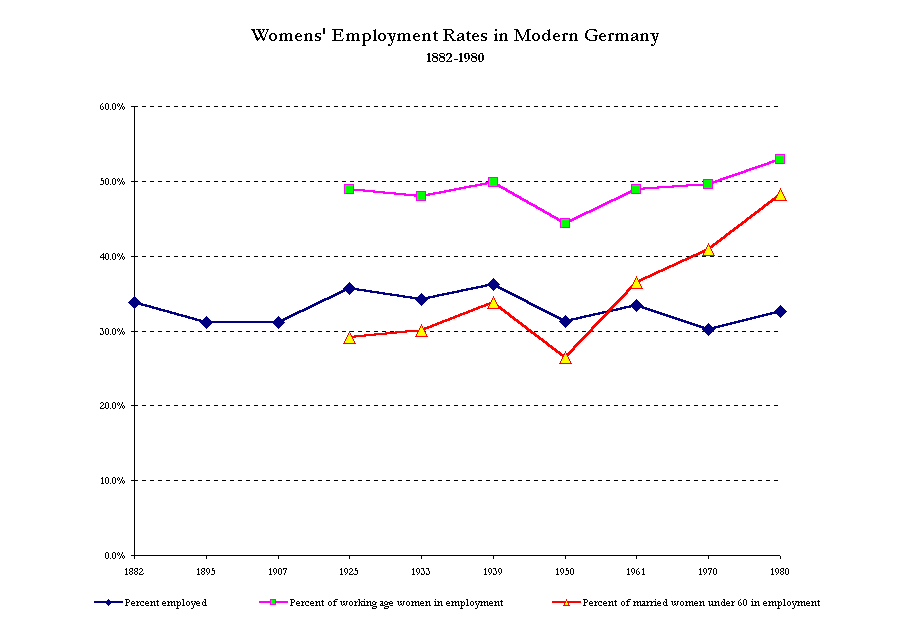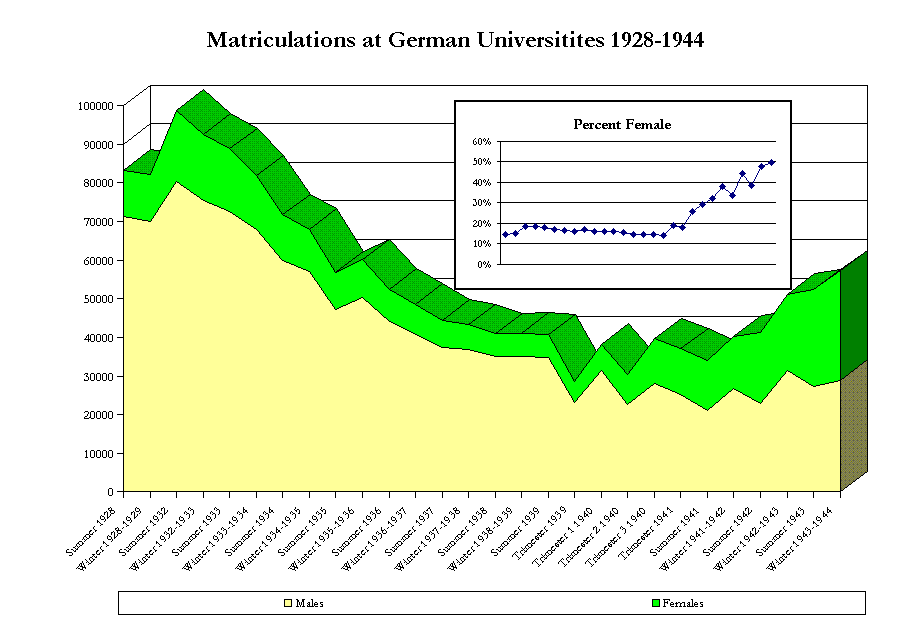
This chart reveals that despite its rhetoric of separate spheres and traditional roles for German women, the National Socialist regime did almost nothing, over the long run, to reduce the number of women in the workplace. Part of the Nazi solution to the economic depression had been a deliberate attempt to exclude married women from the labor market and to move working women into occupations deemed compatible with their female nature. But these policies met with only limited success; in most occupations, more women were working in 1939 than had been in 1933, both in percent and in absolute numbers. The National Socialists had no better success in driving married women out of the workplace: overall, almost twice as many married women were working in 1939 than in 1933.

Data on university matriculations reveals some contradictions of National Socialist policy toward women. The Nazi regime inherited an educational system that made university studies available to women who had passed the comprehensive highschool examination, or Abitur. On the eve of Hitler's accession to power, as a result, the percentage of new female students enrolling at German universities was just under 20%. From 1933 on, however, the new regime reduced the number of matriculations drastically, which caused matriculations to fall over 50% by the outbreak of war. Women were affected by this trend, to be sure, but only slightly more than men. Then the outbreak of war changed everything: with restrictions on university enrollments eased and ever larger proportions of the male population pulled into military service, the proportion of women at German universities had reached nearly half by war's end.
Source: Dorothee Klinksiek, Die Frau
im NS-Staat (Stuttgart: DVA, 1982), 155.